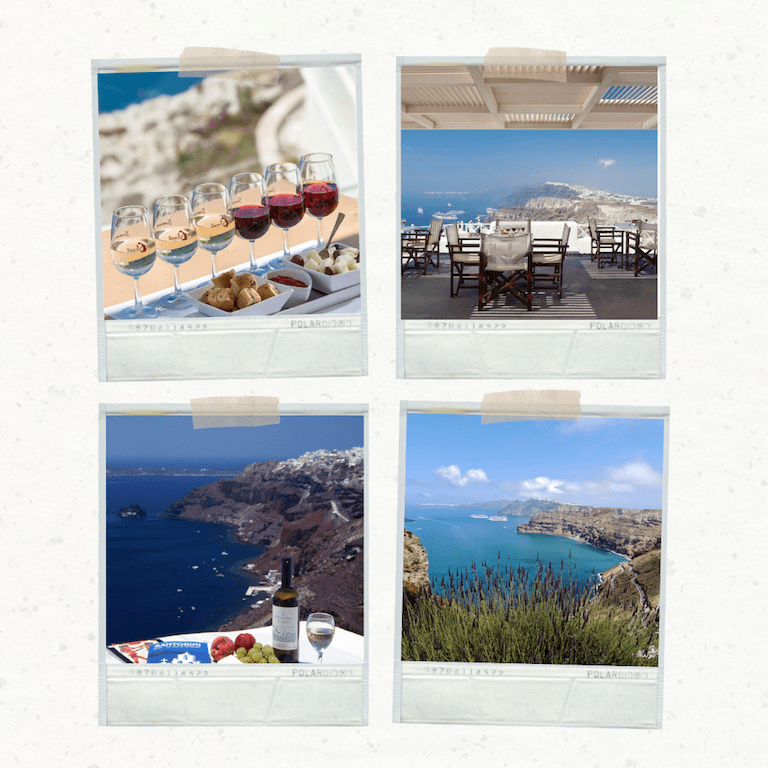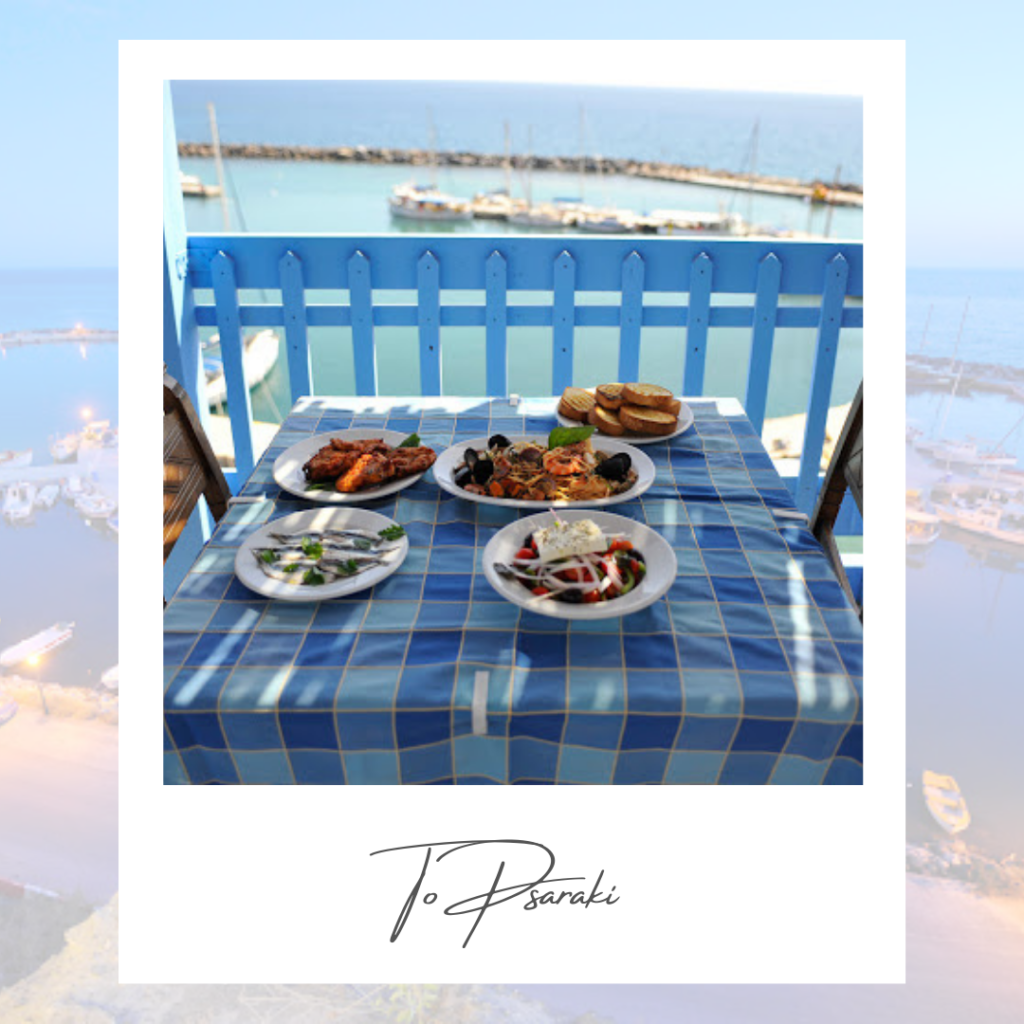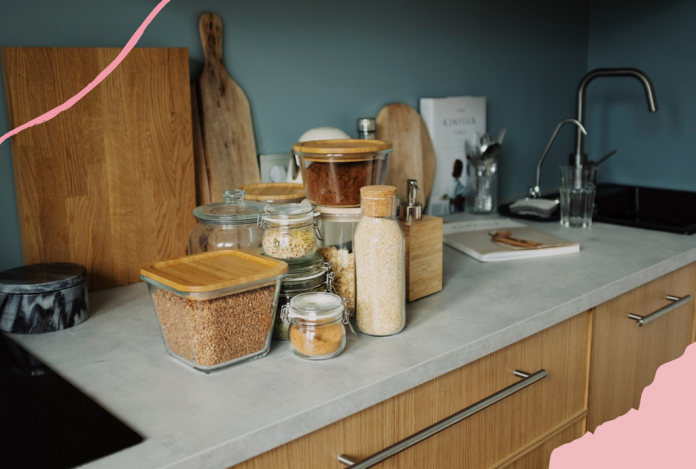Ideal if you’re looking to eat your way around the Cyclades‘ captivating, crescent shaped island.
When it comes to making travel plans right now, Greece is the word tentatively on everyone’s lips.
With the end of lockdown restrictions in reach and freedom to travel again before the year’s out a distinct possibility, there’s a certain excitement in the air, make no mistake. Last month it was reported that Greece were in talks with UK to allow holidays using vaccine passports as soon as the summer, and this has lead to speculative, hopeful planning across the UK.
To quote a song concerning a different type of Grease, “we start believing now that we can be who we are”, and for people who love to travel, it’s safe to say that the belief has returned.
But where to choose in this glorious country made up of 6’000 islands? And how to narrow it down to just one? Well, Santorini is perhaps the most exceptionally beautiful, hugely cherished Greek Island out there, but we didn’t need to tell you that, did we? World-famous for its spectacular sunsets, whitewashed buildings, blue-domed houses and charming windmills, it’s been top of many an intrepid traveller’s bucket list for years now; could 2021 be the reason you finally visit?
Oh, and let’s not forget about its active volcano. We’re not going to pretend to understand the science but the volcanic soil of Santorini is rather special. As explained by Nau in Greece, “After the Minoan eruption in 1613 BC the whole island was covered in a thick, gray layer of ash and pumice”.
But why have we suddenly pivoted to discussion of volcanic expulsions, we hear you ask? Well, this ash and pumice “provides unique conditions that allow farmers to grow specific species of crops” and gives a unique taste – its terroir, if you will – to the island’s agricultural products.
As such, Santorini is a place where it’s really hard to get a bad meal. Though the food scene here is, of course, fuelled by its tourism to an extent, the island’s cuisine still celebrates its heritage and produce keenly. Here, modern flourishes interplay with a deep respect for tradition, and it shows on the plates of tavernas across the island.
If you’re hungry to learn more, here are 5 IDEAL foodie things to do in Santorini.
TAKE A TOUR OF ITS VINEYARDS
Due to the island’s dry and volcanic landscape and mineral-rich land, there are indigenous grape varieties only found on these shores – which of course lends itself to rare, delicious wines.
Assyrtiko is the first wine you should try in Santorini. Containing volcanic mineral notes and the intoxicating aroma of citrus fruit, it pairs brilliantly with fish and shellfish According to Decanter Magazine, “Assyrtiko is to Greece what Albariño is to Spain or Grüner Veltliner is to Austria”. They go on to say that “there really isn’t anything like Santorini Assyrtiko”, and we couldn’t agree more.
While the vine itself has travelled from Greece’s islands onto the mainland, the flavour profile seems to get less distinctive the further it travels from Santorini. Being so unique, it’s a tough one to quantify, but the tasting notes read a little something like this…
“If ever a wine justified the description ‘mineral’ it’s the dry white wine made on this volcanic island. It’s hard to describe the intense, sometimes pungent smoky, Volcanic smell and taste in any other way. It isn’t only the flavour of course: penetrating citrus, especially lemon and other signature flavour, sometimes with quince or a floral note. There can be a salty edge too. And then there’s the trademark acidity. And then there’s the trademark high Acidity. Assyrtiko has the ability to hold it’s tartaric acid in a hot climate.’’ Fascinating stuff.
While you can certainly imagine the wine from this detailed description, there’s nothing like tasting it for yourself first-hand, from where it’s made. So, head to one of the island’s wineries overlooking the volcano to do just that, and learn even more about the fascinating production methods and unique terroir involved.
The majority of tours host tasting sessions, with the two wineries which boast the best caldera views perhaps Santo and Venetsanos, both of which celebrate organic wine with volcanic heritage in the most glorious of settings.
The tour at Santo feels like a genuine steal; a guided tour of the winery comes with a tasting of five premium wines and costs just €40 per person. But perhaps even better value is Venetsanos Winery’s tour, which offers four wines and a lunch of traditional Greek meze spread using some of Santorini’s finest produce thrown in for good measure, all for €45 per person. Decisions, delicious decisions.
We should mention here that Santorini has a unique way of cultivating its wine. Remember that Minoan tuff and pumice we mentioned earlier? Well, it’s unique in the sense that it’s brought about by “anedosa”, a fog that covers the island every morning and ‘waters’ the caldera in place of more formal irrigation. All of this leads to a gorgeously exclusive, idiosyncratic product.
The guys from Elite Estates Villas also recommend trying the internationally acclaimed Vinsanto, a naturally sweet, sun-dried dessert wine. While red in colour, it is actually produced from overripe white grapes. The grapes are left to dry in the sun for about a week, giving the wine a heady aroma of raisins, dried figs, honey, nuts and hot coffee. Most of the wineries produce their own version of Vinsando which all taste very different – the perfect excuse for another wine tasting tour, we think.

LOOK OUT FOR THESE DISHES AND INGREDIENTS
That light lunch using Santorini’s finest produce? Let’s dig a little deeper into that distinctive soil….
While we’re on the subject of terroir, Santorini is known for some distinguished, specific local produce thanks to its volcanic soil. When you’re dining out, keep your eye out for these local ingredients and delicacies which embody the flavours of Santorini.
- Capers – These little flower buds known for packing a punch grow wild all over the island, sprouting out from stone walls and along the craggy coasts. Thanks to the volcanic soil and the dry, windy conditions, the flavour of Santorini’s capers is intense. They are also larger than most capers in the region.
- Fava – This is perhaps the most famous dish on the island. However, it’s not actually made from fava beans. Confusing, we know, but Santorini is known for growing yellow split peas, and the dish known as ‘fava’ is actually a yellow split pea puree. Bolstered with garlic and onion, and given richness by generous amounts of locally cultivated olive oil, fava has a similar velvety mouthfeel and flavour profile to hummus. Look out for its redolent yellow amongst a table of meze and dive in!
- White Aubergines – Yet another rare product largely unique to Santorini, we can again thank the unique Santorinin soil for this delicious fruit (yep, it’s a fruit). White aubergines taste subtly different from the purple variety, lacking its sibling’s bitterness and not containing as many seeds. A must-try using the famous white aubergine is melitzanosalata, an aubergine dip similar to baba ganoush but without the tahini.
- Tomatoes – Santorini is famous for a specific variety of tomatoes that grow nowhere else in the world. Similar in looks to an heirloom tomato, Santorini’s renowned cherry tomato is thicker-skinned, sweeter and deeper red than many other tomatoes. Take a trip to the island’s Tomato Industrial museum to learn more about it, and if you’re picking up souvenirs, Santorini tomato paste is highly revered globally. If you see Tomatokeftedes on a menu during your time here (you will), do order them – these are tomato and feta fritters which are downright irresistible.
- Chlorotyri – A local cheese made from sheep or goat’s milk with a distinctive sour tang, chlorotyri is only made by local producers in small quantities and has an almost refreshing quality to it. Just delicious.
- Kopania – Reminiscent of Chinese sesame seed snacks, these little bites made from raisins, milled barley and sesame seeds are fantastic alongside a glass of dessert wine, which, incidentally, the island does very well.
- Apochti – another local delicacy is the cured pork loin carpaccio, Apcochti. Flavoured with pepper and cinnamon, there’s an enjoyable piquancy which calls to mind salami. Sometimes this cured pork product is made using wild boars native to the island.

DINE, COOK & GO WINE TASTING AT SELENE
If you’re on a gastronomic adventure (you are, that’s why you’re here), then look no further than Selene, arguably Santorini’s premier fine dining destination. With accolades including an entry on The World’s 50 Best Discovery list and Greece’s Food and Leisure Best Restaurant award, if you’re after haute cuisine with a firm focus on using only the finest local produce, then this is the place to come.
Selene has garnered a reputation for showcasing the best produce from Santorini’s farmlands, vineyards and olive grows. Oh, and they’re not bad with the stuff from the sea, too.
The restaurant has recently found a new home in Fira, the capital of Santorini, within the walls of a former monastery. Their dishes are refined, with a “contemporary spin on traditional recipes”, and although the global arbiters of good gastronomic taste Michelin don’t cover the Greek islands, Selene would be a shoo-in for a star if they did.
Selene champions Cycladic cuisine, culture and Santorini’s producers with their innovative menu, and if you’re keen to explore further, Selene also hosts cookery courses, ideal if you want to learn more about the culinary heritage of Santorini. The restaurant offers a short two hour session, a full day or an extended three day course, with prices starting at around €50 for the two hour session.
You’ll be taught about the unique agricultural products of the island and get an insight into the farming life of Santorini. Selene also offers wine tasting sessions where their expect sommeliers unveil the secrets of the volcanic terroir and local wine varieties of the island. You might even impress them with the knowledge you’ve accrued during the course of this article!

GET A TABLE AT ONE OF THE BEST TAVERNAS IN TOWN
To go to Santorini and eat exclusively in upscale restaurants would be a huge mistake. Though doing so is certainly one of the great foodie things to do in Santorini, there’s so much more to the food culture here than fine dining.
There are wonderful tavernas all over Santorini, serving up family takes on traditional recipe, keeping things respectful to the produce and its heritage. The Greeks like to joke that there is a grandma (yiayia in Greek) secretly behind the stoves of every great taverna, and when you find your favourite, you’ll understand what they mean.
Though the best taverna is often the one you stumble across when you’re particularly hungry, here are several which are certainly worth making the journey for:
To Psaraki (meaning ‘little fish’ in Greek) is considered one of the best tavernas for seafood in Santorini. The eatery overlooks Vlyháda seafront, the main fishing port which is rather curiously shaped like a question marked quay.
Since this is the main fishing port on the island and where the boats unload their haul, To Paskari naturally runs a menu which champions things from the sea. A glass of ouzo or a cold beer alongside some freshly caught, grilled sardines and their fresh bread flavoured with Santorini tomato puree is a must order.
Fish of the day options are priced by weight, and are, of course, as fresh as you like. For those with a sweet tooth, the restaurant makes baklava from scratch, and it pairs just perfectly with their homemade semifreddo. Bliss!
Touted as another of the best Santorini seafood restaurant,s while you’re in Vlyháda it would be rude not to visit To Steki tou Psara, which translates as the fisherman’s hangout. It’s been run by the same family for 20 years and true to its name, you’ll find locals and fishermen rubbing shoulders with tourists at the taverna’s tightly packed tables.
Aktaion is one of the oldest, most charming tavernas on the island. This place has been run by the same family since 1922, and although it’s tiny, it has some serious soul. The food is simple, traditional and delicious; the moussaka here, baked in a claypot as is tradition, is great, and if you’re a fan of pasta (who isn’t) there is an exemplary plateful using Santorini’s famous tomatoes and capers.
If you’ve had one too many Ouzos the night before, then a visit to To Koutouki tou Bekri is all but obligatory. They’re known for patsás, a kind of tripe soup that’s considered a common Greek hangover cure and is traditionally washed down with a glass or two of ouzo. Ah, that’s why it works.

BASK AT A BEACH BAR
Sure, you’re here for the food, but Santorini is an island blessed with some seriously idyllic beaches. Be warned; it’s not all golden sands and turquoise waters in Santorini. As the Greece luxury accommodation experts at Elite Estates tell us, ‘’The beaches at Santorini are not your typical Greek ones. The volcanic eruption of ancient Thira took its toll on this side of the island and its beaches seem to belong to Mars – they have a unique beauty, but they’re not the ones you’re used to seeing.’’
That’s not to say you can’t find a great place to kick back in the sun. Throw in a cocktail or two (not into the sea, silly), and a long, languid bask at a beach bar ticks all the boxes needed to see out your foodie holiday in style.
Some of the best beach bars and restaurants include Seaside by Notos, Mesa Pigadia by Akro (a much photographed restaurant housed in a cave) and Yalos Beach Bar Restaurant, to name but a few. Ya Mas!
THE BOTTOM LINE
A foodie tour of Santorini will reveal one of the most unique terroirs anywhere on the planet, with the island’s incredible produce and distinctive wine a product of its history, heritage and geography.
If you’re island hopping around the Cyclades and you’re hungry for more, then check out our suggestions for the IDEAL day out in Mykonos for foodies. We’ll see you on the sand for an ouzo?





